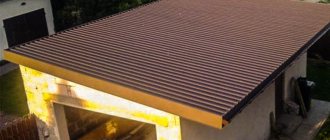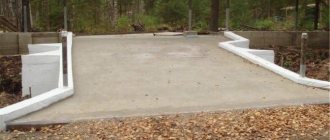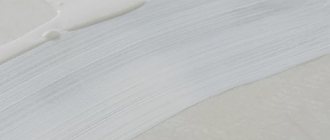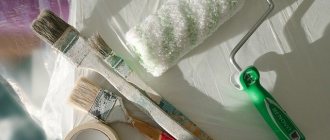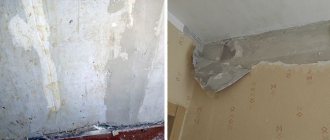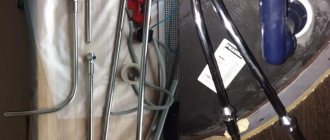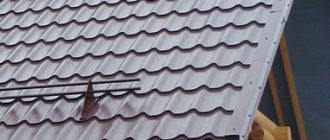Vadim
7694 0 0
Vadim January 12, 2018
It is not known exactly when, where and by whom drying oil was invented, but several thousand people use this composition. In ancient times it was made from different types of oil, technical progress has made its own adjustments and now there are 4 types of drying oil, the technical characteristics of which we will analyze further. And practitioners will learn how to dilute drying oil and how to apply it with their own hands.
Treating wood with drying oil has been practiced for several thousand years.
Types of existing drying oils
Today drying oil is usually divided into several types:
- To natural.
- Semi-natural.
- Combined.
- Synthetic.
To obtain natural drying oil, various mixtures of vegetable oils are used and practically no chemical additives are used. In order for the coating to dry faster, it is customary to add siccatin to the mixture.
As for the scope of application, it should be said that due to the natural composition it is practically impossible to protect wood from insects, and such drying oil costs much more. Therefore, the relevance of facade treatment is questioned.
This impregnation is much more relevant in the form of diluting oil-based paints and pre-priming wood.
This impregnation can also be used, for example, to cover a floor.
Oxols, or semi-natural mixtures, also have a base of vegetable oils, with one difference: the composition contains up to 40% white spirit.
Oxol is used in the same place as natural compositions, but more often than usual it is used in the form of a primer mixture and dilution of oil paints.
It is absolutely not suitable for use in a bathhouse, but it is quite acceptable to use it in residential premises for treating various wooden surfaces.
Among the advantages can be noted:
- Oxol dries a little faster than its natural analogues.
- It has significantly lower consumption.
- The cost is also lower than for natural impregnation.
Mixtures of combined composition have properties similar to semi-natural ones, but they contain much less solvents, by about a quarter.
The main advantage of these impregnations is that they are less toxic to humans.
This mixture is used as a primer and it dries in about a day, at average room temperature and humidity.
Impregnations of a synthetic nature have a purely artificial content.
They are usually made from waste from the production of rubber, coal and oil. Any synthetic impregnation smells unpleasant and has dark shades. This characteristic does not allow the use of drying oil as a primer and it is used mainly for diluting dark paints used to paint facades.
Synthetics have the lowest cost among other analogues, and accordingly they are of lower quality.
Symptoms of poisoning
Intoxication when interacting with paints can be both acute and chronic.
Signs of acute paint vapor poisoning are:
- cyanosis (blue discoloration of the skin);
- nausea, vomiting;
- confusion, deafness;
- severe general weakness;
- dizziness, intense headache;
- sneezing, dry hacking cough;
- watery eyes, nasal discharge (rhinorrhea);
- sore throat, nasopharynx;
- feeling of a foreign body and burning in the eyes;
- noise in ears.
General symptoms may be supplemented by signs of poisoning of a specific solvent used in the paint. Thus, in case of poisoning with dimethyl ketone (acetone) vapors, damage to the nervous system occurs, the clinical picture of which is similar to that of intoxication. Intoxication with butyl acetate vapor is characterized by intense burning of the nasopharynx, oral cavity, and eyes.
In case of chronic intoxication, which is more common among people who come into daily contact with paints and varnishes, symptoms of poisoning appear gradually over a long period of time:
- deterioration in general health, decreased mood;
- digestive disorders (nausea, heartburn, belching, bloating, stool disorders, lack of appetite);
- burning, itching in the eyes, conjunctival hyperemia;
- sleep disorders (insomnia, interrupted sleep, nightmares);
- persistent non-productive cough.
How to choose the right drying oil
How to properly treat wood with stain and varnish.
When choosing drying oil, you should follow the simplest rules:
First of all, you should familiarize yourself with the composition of the impregnation, which is always available on the container, whether there is a GOST, it is indicated only on products with a semi-natural or completely natural composition. If it is a synthetic mixture, you should read the certificate. Any impregnating agent, natural or combined, must have a completely homogeneous structure
If foreign impurities or particles can be visually seen, it is not recommended to purchase this impregnation. You should also pay attention to how transparent it is. Natural compositions have only brown shades, synthetic ones can range from colorless to rusty tones.
First aid for paint vapor poisoning
At the first symptoms of acute paint vapor poisoning, you must:
- evacuate the victim from the place of exposure to toxins;
- ensure a flow of fresh air (open windows, doors, unbutton tight clothes);
- give plenty of alkaline drinks (milk, mineral water);
- If paint or solvent gets on your skin, rinse immediately with plenty of water.
In case of chronic poisoning, first aid measures are ineffective; qualified medical assistance is required.
How to use drying oil to impregnate wood
Features of painting the facades of houses made of brick, wood and plaster
With the help of drying oil you can greatly reduce the consumption of paints and varnishes and because of this it is used in the form of a primer mixture.
It is very easy to apply and does not require special knowledge. Simply apply it to the surface using a brush, natural rag, spray bottle or roller and let it dry.
There are many design options, but the most relevant are:
- Hot impregnation method. This procedure should be carried out in a water bath and is primarily suitable for impregnating non-bulky parts. To do this, take wood, place it in a container with a heated solution and soak it in it for about 6 hours. After this, the part is removed and dried for 4 to 6 days until completely dry. If you initially add about 2% of the total volume of red lead into the solution, the material will dry in two days.
- A mixture of drying oil and kerosene. To do this, take drying oil for wood and kerosene in equal proportions, mix it and keep the wood in this solution. This method can be either cold or hot. The only difference is that with hot impregnation, a few hours are enough, and with cold impregnation it will take a day. The coating dries after the procedure for no more than 2-3 days.
- Drying oil and bag. In order to treat wood with drying oil using this method, you should fill the bag with drying oil about 1/10 of the way. After this, you need to put the wooden element into the bag, wrap it and glue it tightly. The average impregnation time is 3-4 hours. After a while, the bag needs to be opened and since the wood should be completely saturated, the bag should be refilled. This is done until the part stops absorbing.
Your actions after repair
To get rid of paint smell immediately after renovation, you need to be patient and use effective methods!
At all times, airing has been the most effective method to get rid of any odor.
Nothing has changed these days. The longer the windows and balcony doors are open after renovation, the less your things, furniture and you will smell of paint. By the way, be sure to get rid of the source of the smell: used painting supplies (roller, brushes), tray and container where the paint and varnish material was stored.
After intensive ventilation, wipe all wooden parts of the interior with water and mustard: add 1-2 tablespoons of dry mustard to 10 liters of water. A vinegar or ammonia solution will help get rid of the annoying smell in the apartment: dissolve a tablespoon of vinegar or ammonia in 5 liters of warm water. Wash the painted surface with it.
To prevent the smell of paint after renovation from lingering in your apartment for a long time, literally smoke it out. Light a few candles and leave them burning for four hours. Along with oxygen, they will also burn the smell of paint - that’s the whole secret of smoking. And if you don’t skimp and buy scented candles, your home will be filled with real fragrance!
Just be extremely careful with fire so that you don’t have to wonder how to get rid of the burning smell in your apartment.
Wet several terry towels and old sheets, hang them around the apartment, and place wide containers of cold water on the floor. Moisture perfectly absorbs all odors and will help remove this one too.
Ground coffee, baking soda with a few drops of ammonia, charcoal, salt are excellent absorbents. Pour them into flat containers and place them around the perimeter of the room. They will help you get rid of the chemical smell in no time. And ground coffee beans will fill your home with the incomparable aroma of an invigorating drink!
Don’t be afraid to combine different methods: this way you’ll have a better chance of getting rid of paint smell faster and truly enjoying the results of your renovation.
Dyes are used everywhere in various areas of everyday life and production. Pigments are substances that give paints and enamels color; their chemical structure can be mineral and organic, natural or synthetic.
Paints are highly toxic due to the heavy metal compounds they contain, so-called metal poisons (arsenic, zinc, lead, copper), or organic compounds. Toxic components included in paints and varnishes most often adversely affect the skin, respiratory system and gastrointestinal tract.
After drying, all paints lose their toxic properties.
Features of choice
Wood floors
When choosing the appropriate type of drying oil, you need to pay special attention to some nuances:
If possible, assess the degree of transparency of the liquid in the package. Natural drying oil, as seen in the photo, has a dark brown color and has no sediment.
Read the label carefully. It usually contains detailed information about the composition of the liquid, manufacturer, instructions for use, and so on.
You should definitely check the availability of a certificate of product quality, especially for natural drying oil.
High-quality drying oil is a transparent liquid, without sediment, pungent odor or foreign impurities. The color palette of drying oil is quite scarce; the color of the liquid varies from light brown to dark brown.
In order to achieve durability of the treated surfaces and significantly simplify the processing process, it is necessary to correctly select the optimal drying oil option. You can completely cope with the choice yourself, the most important thing is to take into account all the necessary parameters
Why is this necessary?
Painting concrete solves several problems at once:
So, in a bathhouse with its periodic heating there will be much more dust than in a constantly heated workshop;
In addition: dusting is greatly increased by mechanical wear of the floor and vibration. A car driving into a garage, a lathe running, a bar falling onto a platform - they all raise concrete dust.
Painted concrete floor in a gym.
Story
Boiled butter (butter that has undergone heat treatment) has been known for a long time. Even in Ancient Egypt, boiled oil was used to prepare medicines, aromatic substances, and cosmetics. Boiled butter was used in almost the same way in Ancient Rome.
Natural drying oil is quite expensive. It has been used to coat wooden furniture, to enhance sanded or carved wood surfaces, and as a coloring agent with or without the addition of natural pigments. Oil paints for artists (oil painting) are prepared on the basis of drying oil.
In the 19th century, other substances were found that prevented damage to wooden surfaces and wood products from moisture or pests. The use of drying oil has decreased, but its production has not been abandoned. Work began to find its substitutes or means that would make its production cheaper.
Natural materials – in search of safe ones!
If you have chosen wood for finishing your house, guided primarily by its environmental friendliness, then it will probably be important for you to comply with this condition to the end. After all, an environmentally friendly tree can be coated with so much chemicals with your own hands that any sense in using this material is lost.
And here a slightly forgotten drying oil enters the arena. Of all the film-forming materials that are on the market today, it is, objectively, the most natural. This statement is easily confirmed by the fact that most drying oils consist of natural oil (hemp, flaxseed, sunflower, etc.) - the percentage of natural components ranges from 45 to 95%.
Drying oil or, as it was called in the old days, “boiled oil” was known to master painters several centuries ago. Already in the 17th century, every artist used this material. Today, the technology for producing natural drying oils is practically no different from the methods known in ancient times. There are different types of this film former, the properties of which differ quite significantly.
Properties of drying oil
Some vegetable oils, when left in the open air, as a result of the action of sunlight, heat and oxygen, thicken, darken, and create films in a thin layer. It has been noted that not all organic oils have these properties. The development of chemistry and studies of the chemical composition of liquids have proven that only those organic oils that contain linolenic acid are capable of thickening and creating thin films. If its content is intended, such organic oils do not dry out (for example, olive).
Linolenic acid content -
- linseed oil - up to 80%
- hemp seed oil – up to 70%
Walnut (from walnuts), sunflower, poppy oils have from 50 to 30% linolenic acid, so they dry rather slowly and for a long time. All these oils (before heat treatment) contain substances that slow down drying. But they are destroyed during heat treatment and the oil thickens faster and can dry quickly to form a film. Organic oils also obtain the ability to dry faster after adding metal salts (driers) and heat treatment. The liquids obtained in this way are called drying oils.
Most modern drying oils are capable of drying and forming films in 24 hours (from six to 24 hours).
Ancient recipes for drying oils allowed the use of amber or resin for their production. According to modern concepts, they are classified as varnish.
Composition and technical characteristics
Natural linseed drying oil includes oil that can be heat treated with a maximum temperature of up to 300 °C.
The finished product made from linseed oil is a transparent liquid of light yellow color with an oily nature.
The composition of linseed oil according to GOST standards includes:
- flax oil – not less than 97%;
- Drying agents – metal particles or carbon salt used to speed up the drying period, no more than 3.
Depending on the production technology used, drying oil can be of several types:
- standard – production is carried out by heat treatment, without blowing;
- oxidized - purging is used during oil simmering.
According to the requirements of GOST 7931-76, technical characteristics must fully comply with the following parameters:
- oil and silicates should be in a ratio of 97/3;
- aroma – natural;
- drying period – no more than a day at 22 °C;
- shade according to the iodometric school - 200;
- density indicators – 0.93-0.95 g/m3;
- acid value – 5;
- transparency during settling can be observed within 24 hours;
- phosphorus-containing components – no more than 0.015%.
How to dry drying oil
Drying oil with polymetallic driers has the maximum drying speed. If we take, for example, natural flax raw materials that contain manganese or lead drier, then it will take 12 and 20 hours to dry. If you combine these components, you can achieve a much faster period, in some cases 6-7 hours.
The most important factors on which the drying process directly depends are air humidity and temperature.
For comparison, we can give an example in the form of drying oil with cobalt drier. If the room temperature is from 25 degrees, then it will dry approximately twice as fast as at 10 degrees.
Again, to achieve this result, air humidity should be within the recommended limits and not higher than 70%.
If wood products are placed in a room where it is dry, warm and there are no drafts, then it will dry quickly enough.
Any container with drying oil should be stored separately from any heating devices and out of the reach of children.
Such impregnation as drying oil is practically a panacea for treating any wooden surfaces. And most importantly, it is an excellent alternative to expensive modern analogues. However, you should not use drying oil without making sure that it is suitable for use in a particular room.
Ways to prevent odor before starting work
If the repair process involves working with drying oil, it is better to find out in advance how to remove the smell. However, you can reduce the concentration and it will help it fade faster. To do this, you can use these tips.
- Before painting, leave the windows open and turn on the fan. The blades of the equipment must operate in such a way that the air flow is directed outward from the room.
- In rooms with high humidity, it is better to pre-dry the air using an air conditioner or heater.
- You can add a small amount of essence with mint, lemon or vanilla aroma to a jar of drying oil.
If you have to interrupt work for a short period of time, you must close the container tightly. And after completing the repair, it is better to get rid of the rollers and brushes that were used to apply the solution.
felt boots 11 Sep 2014
This is interesting. My drying oil is not linseed or hemp (you can find these types of linseed oil), so does that mean it doesn’t need to be covered at all? If it doesn't dry completely.
Use modern impregnation agents. With several layers, you will get a varnished surface.
Use modern impregnation agents. With several layers, you will get a varnished surface.
The easiest way to find out is to conduct a test on a small surface using drying oil and various varnishes, of course, if there is such an opportunity.
In my opinion, it would probably be easier to take something like a one-component varnish with UV protection. When applying the first layer, add 15-20% thinner, and for subsequent layers without it.
Application area
Drying oil is used in finishing matters. At the same time, it is used to color wood. It is worth considering that drying oil is very different from varnish. Firstly, it is a film that forms on the surface. Secondly, when applied, drying oil does not raise the wood fibers at all, which will not require additional processing later. Thirdly, it retains its properties better after years.
That is why it is customary to finish floors and walls with its help. Only in the case of finishing the floor, you need natural drying oil , since it is better than others able to resist the loads of intense walking. As for the issues of wall decoration, drying oil is unique here. It is convenient to use here because you can add various pigment shades, which will allow you to diversify the walls and achieve ideal results.
Today there are examples and varieties of drying oil that can be used not only for direct contact with wood. For example, it is often used to protect metal from rust by coating the surfaces of metal structures. It is applied to walls that are plastered, which allows it to be used as a primer.
What is it made of?
Drying oil is made from vegetable oils with various additives (as a rule, these are driers - substances that accelerate the drying process of the oil). Additives are usually compounds of various metals. There are several types of drying oils:
- Natural – oil content of at least 97%;
- “Oxol” – 55% oil, the rest is solvent and driers;
- Combined - differs from the previous type only in the proportion of oil in the composition;
- Alkyd - instead of oils, alkyd resins are used;
- Synthetic - instead of natural components (oils or resins), their synthetic analogues are used.
The first 3 types of drying oil are often used for processing wood in wooden construction, as well as in the production of wood products. However, this is far from necessary, since there are other means for processing wood. By the way, if you are seriously thinking about building a wooden house, then rubcon.ru is the place for you.
What harm can drying oil cause?
To begin with, let's look at drying oils based on natural oil. The oil itself is not dangerous, but there are a few “buts”:
- Potentially hazardous metal compounds (lead, strontium) can be used as driers. However, their quantity is not large and does not reach dangerous concentrations. On the other hand, driers continue their effect on drying oil even after drying, gradually leading to the destruction of the outer layer, its oxidation and the release of various substances into the air. Due to the fact that such excessive destruction would lead to a lack of demand for drying oil, the proportion of strong drying agents in the composition of drying oil is small, and the concentration of substances released during the oxidation process is even less, since the process is sluggish and stretches for years. In other words, from this point of view, there is nothing special to be afraid of, except drying oil of dubious quality with an unclear composition.
- Essential substances. Any vegetable oil contains volatile components, which, theoretically, are not dangerous. However, these components have a pungent odor, the result of long-term exposure to which can be headaches. Allergic reactions are also possible, especially with systematic interaction with drying oil vapors.
- Oxidation. There is a version that oil in the process of oxidation is a carcinogen. However, to get such a negative effect, you need to work in the production of drying oil for several years and not use protective equipment. To obtain a carcinogenic effect, the dosage of oxidized oil must be huge. Let us remember that without any special consequences we often eat food fried in vegetable oil, and during the frying process it oxidizes very intensively.
As for synthetic drying oils, everything depends so much on the composition that without knowing it, it is very difficult to assess the likely harm.
So, the most likely negative factor from using drying oil that you will encounter even with one-time use is the smell. Fortunately, this problem can be eliminated by intensive ventilation, and as the treated surface dries, it disappears by itself.
Consumption
Anyone who is going to use drying oil to paint wood, including floors, ceilings, walls and other surfaces, is interested in the question of what the consumption will be during work and how long does the drying oil dry ? Everything here is purely individual. Even if the packaging says that about 100 grams of raw materials will be used per square meter, you should always take into account the reserve that needs to be laid down at the time of purchase of about 30%. This is due to the preparation of the surface on which you will apply drying oil.
In order for the result to be close to the ideal value, you need to prime the surface. This applies to wooden structures, since the fibers are often clogged with dust, which leads to waste. Therefore, if you have eurolining, imitation timber, logs and others in wooden surfaces, then perform additional priming of the surface.
If you paint plywood, then the consumption here will be minimal. Its surface is smooth, so it does not absorb much. To reduce costs in all other cases, use preparatory oils. They will fill the pores of the wood, create a smooth effect, which will save up to 30% of the cost on drying oil.
Research the drying oil you buy. If it is made of natural materials, it most likely has a medium density. This will make it liquid by diluting it with the required amount of solvent. This drying oil will be applied sparingly. Materials containing synthetics often dry faster, but their consumption is also not small.
Artificial drying oil
Artificial drying oils are obtained mainly from petroleum products. Common artificial drying oils are glyphthalic and slate. Glyphthalic drying oil is a mixture of petroleum oils and solvents. Shale drying oil consists of oxidation products of shale oils dissolved in organic solvents.
Artificial drying oils are dark-colored liquids. The films of these drying oils have insufficient strength, poor moisture resistance and low heat resistance.
Artificial drying oils are used for rubbing thickly rubbed paints (except white), as well as for diluting these paints and thickly rubbed paints prepared with other drying oils. In addition, they are used for putties and wood primers.
Artificial drying oils should not contain free mineral acids; Only traces of water-soluble salts are allowed.
Artificial drying oil obtained from rosin is completely different in composition and drying behavior from natural drying oil.
Artificial drying oils are obtained mainly from petroleum products. Common artificial drying oils are glyphthalic and slate. Glyphthalic drying oil is a mixture of petroleum oils and solvents. Shale drying oil consists of oxidation products of shale oils dissolved in organic solvents.
Artificial drying oils are made by thermal or chemical treatment of polymers, often with the addition of vegetable oils. A representative of this type of drying oil is glyph-tall drying oil.
Artificial drying oils are dark in color and have a relatively low atmosphere - and moisture resistance. They are used to prepare paint compositions for interior painting of metals, wood and plaster.
These artificial drying oils can be used for primers and putties on plaster, wood and metal when preparing surfaces for interior painting with all types of paint compositions. Paint compositions and synthol on ether-salt drying oil, carbanol, syntoxin due to the pungent odor can only be used when painting premises, the commissioning of which is carried out after ventilation for 5 - 10 days after the completion of painting work. In case of possible humidification of premises (baths, bathrooms, laundries), these paints are not recommended for use.
Semi-natural and artificial drying oils are used for diluting grated paints. Not suitable for sealing putties.
Semi-natural and artificial drying oils are used to dilute grated paints used to coat equipment. They are not suitable for sealing joints.
A number of artificial drying oils are obtained from the oxidation products of white spirit (gasoline solvent) and purified kerosene.
Films of artificial drying oils dry at different times, depending on their type: from dust in no less than 20 minutes.
Much attention is paid both here and abroad to the problem of obtaining artificial drying oil that replaces drying oil produced on the basis of vegetable drying oils. The solution to this problem is of great theoretical and applied importance. . Of the many artificial drying oils, glyphthalic, shale, synthol, as well as ethinol (varnish) and coumarone-indene drying oils are widely used.
Of the many artificial drying oils, glyphthalic, shale, synthol, as well as ethinol (varnish) and coumarone-indene drying oils are widely used.
Specifications
Drying oil "Oksol" is produced in accordance with GOST 190-78, which prescribes the standards for various indicators for grades "B" and "PV". There are eight basic standards that determine whether drying oil belongs to one type or another.
They vary depending on the type of oil used and the brand of drying oil itself:
The color indicator is listed first in the table. For both brands, this value is identical; the color should be no darker than 800 mg J/cm³ (on the iodometric scale). But there are exceptions for drying oil, where the base is camelina oil (brand “PV”), this indicator has a different numerical expression. The color of such drying oil should be no darker than 1800, while for drying oil made from soybean oil, this indicator is 1100 J/cm³.
According to GOST 190-78, there are strict requirements that dictate which containers drying oil can be poured into, at what temperature the liquid can be safely stored and what precautions to take when opening a jar of the composition. All safety requirements are described in detail in this document.
Photo of drying oil
Additional Information
Drying oil can be used for priming not only wooden walls, but also plastered ones. It is also often used as an anti-corrosion coating for metals.
Natural drying oil. It consists of 95% vegetable oil, and only 5% of drier, a special additive that accelerates the drying of the treated surface.
It is unprofitable to use it for treating external surfaces due to the high financial costs, while this species does not provide 100% protection against fungus and insects.
Natural drying oil is used to dilute oil paints and prime wooden surfaces before painting or varnishing.
Oxol. It consists of 55% natural oil component, 40% solvent, white spirit, and 5% drier. The scope and properties of this type of drying oil are the same as natural ones, only it dries faster and costs less.
It also does not provide 100% protection. Learn more about why Oxol drying oil is needed and what it consists of in the video:
Composite drying oil is made entirely from artificial chemical components, in particular petroleum-polymer resins, and has a pungent odor.
Drying oils based on alkyd resins are considered the best. They are not as greasy and expensive as natural drying oils, and not as toxic as composite ones. But, nevertheless, it is better to use them for finishing outdoor country buildings (porch, swing, gazebo, summer kitchen) and for the interior rooms of country houses and apartments.
Drying oil is a good alternative to modern expensive means for impregnating and priming wooden surfaces.
But remember that some types can be toxic and are not suitable for use in residential areas.
If you need guaranteed protection from external factors, drying oil alone is not enough.
- What is water based wood impregnation used for...
- Protecting wood from rotting and burning: means and…
6001
Classification
Drying oils are divided into three large groups: oil, alkyd and synthetic. Drying oils are natural, semi-natural and synthetic.
Natural drying oil. It contains natural oil up to 97% - flaxseed, sunflower, soybean, etc.
The oil is filtered and during heat treatment it can undergo air-oxygen purging or not. Drying oil after air-oxygen blowing was called oxidized; without it, it was called polymerized. The drying oil obtained in this way lost its transparency, thickened and acquired a dark color. Salts of cobalt, lead, strontium, iron, and lithium are used as driers. But the content is small (up to 3%).
Drying oil oxol
Oxol has a natural oil content of up to 55%, the other components are solvent and drier. White spirit is used as a solvent - up to 40%, 5% is a drier.
Oxol has an unpleasant odor and can remain for some time even after drying. Oxol drying oil made from linseed oil is considered to be of high quality; oxol from sunflower oil has worse properties compared to linseed oil. Oxol is used both in interiors and on building facades, to cover garden furniture.
Combined drying oils
This is a solution in white spirit of a mixture of oxidized oils with dehydrated oils and drier. The combined drying oils include drying oil K-SKDP, which is a product of modification of sunflower drying oil with low molecular weight rubber SKDP; naphthopolymer drying oil - 55% solution of carbon-water resin in white spirit.
Alkyd drying oils
Alkyd drying oils are obtained by processing vegetable oils. Drying oils are classified according to the type of alkyd resin -
- glyphthalic
- xiftaleva
- pentaphthalic (made from sunflower, soybean and camelina oils; PF-K - using castor and tung oils).
Synthetic drying oils
Synthetic drying oils are solutions of shale oil, salts of naphthenic acids and some resins in organic solvents. So far, drying oils include: slate, synthol, ethinol, polydiene etc. Of these, only slate provides a weather-resistant film, therefore it is recommended for outdoor work. It is not used for interior painting because it has a strong odor. Drying oil ethinol forms a shiny hard film that is resistant to alkalis, acids, and water, but it is not weatherproof. It is used for anti-corrosion primer and as an additive to other drying oils (no more than 15%).
Soviet-made synthetic drying oils took a long time to dry, were poorly maintained on the surface, and over time cracked and crumbled. Synthetic drying oils are the most toxic in quality. There is a ban on their use in residential premises. They are used only for outdoor work, with restrictions - in temporary premises for adults, but with good ventilation.
It is advisable not to use them at all in rooms for children, the elderly and teenagers.
Video description
How to edge and process chipboard.
Finishing with paper-laminated polymers
Various materials are used for lining chipboard with polymers, which are laid in layers. This can be paper, veneer, fabric and other fillers. Processing with paper-laminated polymers involves the use of paper, which has good strength and ductility, and also improves the appearance of chipboard. Before finishing, a board of the required size is cleaned of dust using brushes and compressed air to achieve maximum adhesion between the chipboard and the polymer. The cladding takes place under pressure.
SAFETY REQUIREMENTS
3.1. Drying oil oxol is a toxic and flammable liquid, dangerous at elevated temperatures, which is due to the properties of the solvents and oils included in its composition. The toxicity and fire hazard characteristics of the solvents included in drying oil oxol are given in Table 2.
table 2
| Solvent name | Maximum permissible concentration in the air of the working area of industrial premises, mg/m | Temperature, °C | Concentration limits of ignition,%, by volume | Hazard Class |
| self-ignition | upper | |||
| White spirit (nefras S-155/200) (GOST 3134) | ||||
| Nefras S-150/200 | ||||
| Turpentine (GOST 1571) |
The fire and explosion hazard indicators of drying oil oxol are given in Table 3.
Table 3
| Product name | Self-ignition temperature, °C | Flash point in a closed crucible, °C | Temperature in an open crucible, °C | Temperature limits of ignition, °C |
| flashes | ignition | |||
| Drying oil oxol (solvent - white spirit (nefras S-155/200)) | ||||
| Drying oil oxol (solvent - nefras S-150/200) |
(Changed edition, Amendment No. 1, 2).
3.2. During the production, testing and use of oxol drying oil, fire safety requirements in accordance with GOST 12.1.004 and GOST 12.3.005 must be observed, the premises must be equipped with fire fighting equipment in accordance with GOST 12.4.009.
3.2.1. Work on opening metal packaging must be carried out with tools that do not produce a spark upon impact.
3.2.2. In case of fire, use all fire extinguishing means (chemical foam, water vapor, finely sprayed water, inert gas, asbestos sheet).
3.3. In the premises for storing and using oxol drying oil, the presence of open fire is prohibited; artificial lighting and electrical equipment must be explosion-proof.
3.4. Personal protective equipment - according to GOST 12.4.011.
3.2-3.4. (Changed edition, Amendment No. 1).
3.5. All work related to the manufacture, testing, use and storage of oxol drying oil must be carried out in rooms equipped with supply and exhaust ventilation or well ventilated. (Introduced additionally, Amendment No. 2). (Changed edition, Amendment No. 1, 2) .
5.4. Determination of acid number - according to GOST 5476. For dissolution, use a mixture of one part of ethyl alcohol and two parts of ethyl ether or a mixture of equal volumes of ethyl alcohol and benzene according to GOST 5955, or a mixture of equal volumes of ethyl alcohol or toluene according to GOST 5789.
5.5. Determination of the mass fraction of non-volatile substances - according to GOST 17537, section 1. In this case, 1.5-2.0 g of drying oil is placed in a cup, weighed and the result is recorded to the second decimal place. The contents of the cup are distributed by rotation into a thin layer along the bottom of the cup. Then the cup is placed in a drying cabinet and dried for 15 minutes at a temperature of (140 ± 2) ° C, after which the cup is cooled in a desiccator, weighed and the result is recorded to the second decimal place. Subsequent weighings are carried out every 5 minutes of drying. The mass is considered constant if the difference between the results of subsequent weighings does not exceed 0.01 g. Calculations are carried out to the first decimal place. The permissible absolute discrepancy between the results of two parallel determinations should not exceed 1%. (Changed edition, Amendment No. 2).
5.6. Determination of sludge by volumetric method - according to GOST 5481 without heating.
5.7. Determination of transparency - according to GOST 5472, while the drying oil is poured into a cylinder with a capacity of 10 cm or into a test tube made of colorless glass according to GOST 25336. (Changed edition, Amendment No. 1).
5.8. Determination of flash point in a closed crucible - according to GOST 12.1.044. (Changed edition, Amendment No. 2).
Additional Information
All types of oils can be used to treat wooden surfaces
Particular attention should be paid to the place of application - drying oil for external use or for internal use.
Consumption
When treating wooden surfaces with drying oil, the following stages of work are distinguished:
- Preparatory work. It consists of preparing the surface for applying drying oil. It should be cleaned by hand from dirt and dust, degreased and any moisture removed.
- Application. A brush with softer bristles is best for application. If the amount of work is large, then a roller is used. The oil is applied generously so that the wood fibers are well saturated. If deep impregnation is required, use hot drying oil. To process one square meter of material you will need 130 ml of drying oil. Usually 2-3 layers are enough, but it all depends on the desired end result.
- Drying. The normal temperature for drying is 20 degrees. In this case, it is desirable to have a complete absence of drafts in the room. On average, wood treated with drying oil dries within 24 hours.
Paints and enamels are often very thick in consistency, so painting a surface with them can be difficult. In such cases, the paint is diluted with drying oil. It is added until the desired thickness is achieved. Thus, this method allows you to reduce paint consumption and save money.
Selection of drying oil
When buying drying oil you need to be careful
You should pay close attention to the color of the drying oil and packaging. The label must indicate the composition, GOST or TU number of the product
GOST indicates state level standards. It is advisable to check the certificate of conformity and hygiene certificate. The packaging must indicate the place and date of production and instructions for use.
A high-quality product does not have external mechanical damage to the container and does not contain sediment. The smell of the product, the weaker the better.
Oxol
Before getting acquainted with the features of oxol, you should understand what any drying oil is and what its purpose is. This is a liquid film-forming agent consisting of vegetable oils and additives subjected to thermal action. The product is otherwise called “boiled butter”. When applied to wood, it undergoes polymerization and turns into a dense film that protects the surface.
There are different types of drying oil, one of them is semi-natural or oxol. According to GOST, the proportion of natural components present in such a product must be at least 55%. Partial replacement of oils with polymer resins is allowed - no more than 40%.
The “B” marking on the impregnated packaging implies that only the following types of oils were used to make the product: linseed and hemp. The designation “PV” means that the oxol contains non-edible types of oils.
